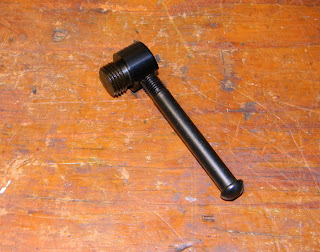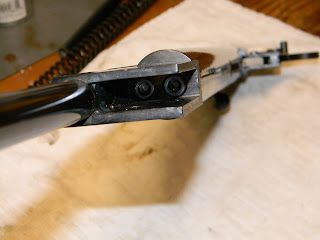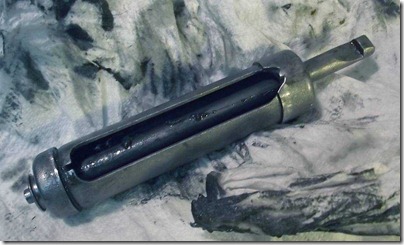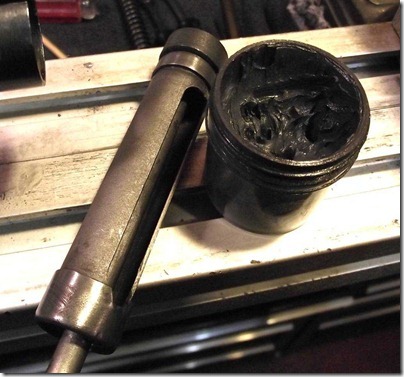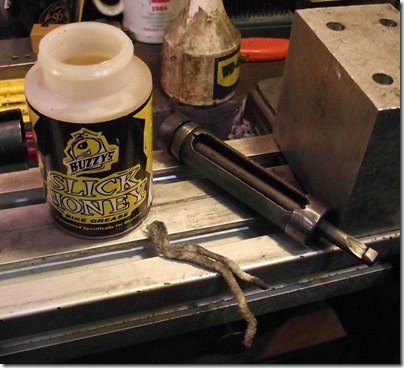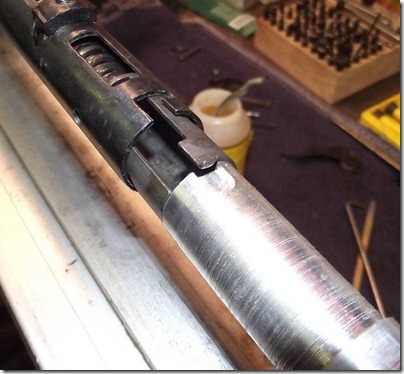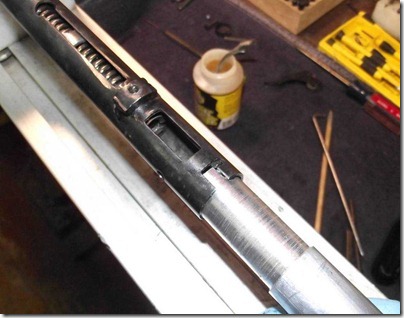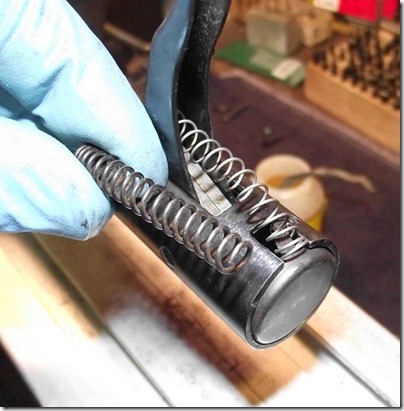
Started by removing the two forward stock screws. Note, these are SAE fasteners--not metric as on the original British made Sterlings.
Removed the rearmost screw in the trigger guard and action lifted out of the stock.
Popped off the circlip on the rear sight elevation pivot.
Unscrewed the right side bolt and the sight and elevation spring came off from the base.
Two small screws and a recoil pin hold the sight base to the upper tube.
Just a pic of the holes in the tube.
As I had no idea how much preload was on the mainspring (--though I swear that several old sources reported that the preload was absolutely minimal) I threw it into the mainspring compressor. The brass drift is in the through hole in the end cap to act as a handle.
End cap was unscrewed and the spring pre-load backed off.
That's a good 3+ inches of pre-load on the spring. I sure wouldn't call that "minimal". I think we should add this gun to the list of "should use a spring compressor for disassembly/reassembly."
Thirteen and a half inches of spring. Shades of the Feinwerkbau 124.
This is quite possibly the longest factory spring guide I've ever seen. The steel guide is roll-pinned into the threaded end cap. Does anyone know if the British version has a threaded end cap or was this a tongue-in-cheek warning shot at the old Beeman "Tap the Cap" ad campaign?
There's another end cap on the upper tube. Double threaded end caps. It's like they're hitting Beeman with both barrels.
Threaded the mounting bolt into the bottom of the cap...
and unscrewed it from the tube.
Like so.
Couldn't get the pivot's lock bolt to move with a regular screwdriver. The small ratchet handle in the Chapman kit provided enough leverage.
After its removal, the main pivot bolt is unscrewed from the right side.
With the pivot bolt removed, the cocking lever can be pulled out enough to disengage from the piston.
Interesting. The compression tube is bolted to the breech block.
Pressed out the sear pivot with a brass drift.
The sear is now free to drop down enough to allow the piston to pass.
Piston didn't want to come out. Really tight.
Awesome. My brand new, old stock gun has a smashed piston.
Double ring seals with a center bumper.
I'll assume that's why it didn't want to come out of the tube. I can probably salvage this a couple ways. But the pertinent question is why?
More soon.













